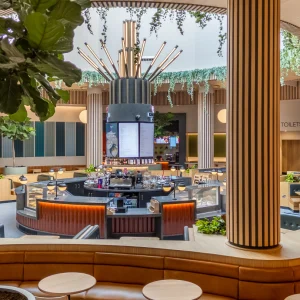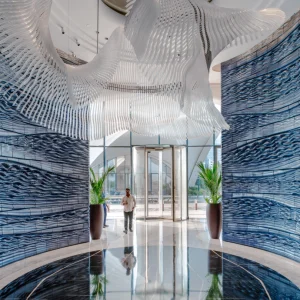DESIGNING FOR NEURODIVERSITY is a challenging proposition for the design industry. Whilst our awareness about what it means to be ‘neurodivergent’ is steadily improving, we are only at the cusp of understanding the spatial and sensory challenges that neurodiverse people face. We are certainly more informed about how our brains may process, learn, and behave in a different manner to what is considered ‘typical’, but we still do not have the language to define neurodiverse people’s needs, and we are yet to really tackle how we design for all types of people.
In the world of lighting design, where our primary reference is the people that inhabit a space, we need to find a way to create balanced schemes that do not distract, overstimulate, or cause discomfort. Brightly illuminated spaces and contrasting light levels make sense in the workspace sector where our goal is to energise and motivate occupants, but these environments can be confusing or distressing for those who are hypersensitive to light. Pattern projections and colour-changing lighting can be a welcome source of intrigue in a hotel lobby or an atmospheric restaurant, but for some people, this is visual noise that they can do without. These effects may even create a scenario where a person must seek out an empty space in which to pause and recentre themselves.
So, how do we design spaces that enable all people to be the best that they can be? We cannot default to designing muted spaces because visually appealing environments still appeal to so many. Conversely, we cannot continue to design for one way of thinking and disregard the needs of a large proportion of our population. Lighting designers need to work closely with other disciplines to openly share knowledge and find a way to design environments that enable people, without impeding others.
Our schemes need to offer spatial flexibility with a mix of lighting elements across those spaces. We can still have fun and engaging moments, but only if these elements are tempered and toned down in other places. We need to offset high illuminance areas with dimly lit breakout areas that offer a quiet place of refuge. Circulation routes within a building need to be carefully considered to accommodate those who struggle with quick adjustments to light levels.
It is also likely that we will see a greater level of personalisation in our spaces in response to varying requirements. It is an approach that we should be aiming for in the workplace sector, where users can benefit from having more control over the light levels around their own desk, or the option of working in a space with low-level lighting or even no artificial light at all. When we are designing for so many, it is hard to give people complete control over their lighting, but we can allow them to control where they sit.
Finally, we need to accept that standards are devised to suit a ‘neurotypical’ way of thinking, so we may have to buck the trend for compliance when it comes to accreditations such as LEED and WELL. As we accept that diversity is the new normal, we need to move away from a one-size-fits-all approach and find ways to work creatively within these constraints. Our schemes will be all the better for it.





